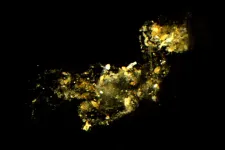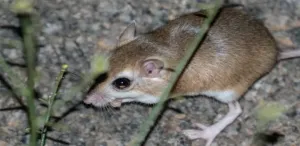Urban life is not to everyone's taste
Researchers record adaptability of 158 butterfly species to urbanization
2021-06-01
(Press-News.org) Habitat change, for example through urbanisation, is one of the most important causes of biodiversity decline. By 2050, settlements and cities across the globe are predicted to increase by two to three million square kilometres - about half the size of Greenland. Natural and semi-natural habitats will thus gradually be replaced by urban habitats.
How wildlife can adapt to such fundamental changes has mostly been studied for a few species groups, such as mammals and birds.
"In order to make predictions about the development of biodiversity as a whole and to combat current phenomena such as insect declines, robust knowledge is also needed for other species groups," says first author Dr Corey Callaghan from iDiv and MLU. "However, the data basis for such groups is much poorer. Butterflies offer the advantage of being popular with many people who volunteer to record their occurrences, which creates a relatively good database."
To find out how butterflies respond to increasing urbanisation and which species can adapt to it, the scientists analysed more than 900,000 records of 158 butterfly species in Europe taken from the Global Biodiversity Information Facility (GBIF). This is the largest open-access portal for biodiversity data on all species, which also includes many volunteer-contributed data. The distribution data showed that the majority (79%) of butterfly species avoid cities. As many as 25 of the 158 species were more abundant in urban environments than in other habitats, led by the southern comma (Polygonia egea). The scarce fritillary (Euphydryas maturna) showed the least affinity to urban life. "It was surprising to find such clear patterns across the European continent," says Callaghan. "The degree of urban affinity indicates which species are likely to be winners and losers from urbanisation in the future."
In addition, the researchers investigated which traits were typical for species with a greater affinity for cities. It turned out that generalists, in particular, are able to adapt well to the urban habitat, e.g. species that feed on many different plants and can withstand strong temperature variations. In addition, the winners generally showed relatively longer periods of flight activity during the year and reproduced several times a year. Specialised species, on the other hand, which depend heavily on a particular host plant or plant community and climatic conditions, are not coping as well in urban environments.
"With our method, we were able to show that species traits such as temperature and habitat preferences can be used as general proxies to predict which species are most sensitive to human activities in order to prioritise them for conservation measures," says co-author Dr Diana Bowler from iDiv and FSU.
In order to halt the loss of biodiversity through urbanisation, the authors see the need for urban and regional planners to ensure the presence of food species and host plants, especially of specialised butterflies. "However, every garden owner can also help by choosing to plant native plants", Callaghan recommends.
"Our work clearly illustrates the power of citizen science and biodiversity data networks such as GBIF," says senior author Prof Dr Henrique Pereira from iDiv and MLU. "Most of the butterfly observations we used from the GBIF database were collected by volunteers across Europe. Everyone can contribute to increasing knowledge about the impact of our lifestyles on biodiversity. One easy way people can get involved and contribute data is by using smartphone apps like 'iNaturalist' which feed directly into the GBIF network and hence provide data across the globe for researchers to better understand how biodiversity is doing in an increasingly modified planet."
INFORMATION:
[Attachments] See images for this press release:

ELSE PRESS RELEASES FROM THIS DATE:
2021-06-01
To realize tritium self-sustaining cycle through tritium breeding blanket has been one of the core technologies of future fusion reactor. Therefore the design and function of blanket must be validated by neutronic experiment under D-T neutron environment. But due to the scarcity of DT neutron source, and highly radioactivity during neutronic experiments, it is very difficult to validate the nuclear response of the blanket, the data of tritium production rate mainly rely on Monte Carlo simulation.
Recently, a research group led by ZHU Qingjun from Institute of Plasma Physics, ...
2021-06-01
As anyone who has ever procrastinated knows, remembering that you need to do something and acting on that knowledge are two different things. To understand how learning changes nerve cells and leads to different behaviors, researchers studied the much simpler nervous system of worms.
"In this study, we can now translate neuronal activity to behavioral response," said Project Researcher Hirofumi Sato, a neuroscientist at the University of Tokyo and first author of the research paper recently published in Cell Reports.
The discovery was made possible using technology that researchers describe as a "robot microscope," first developed in 2019 by researchers at Tohoku University in Miyagi Prefecture, northeastern Japan.
The technique involves genetically modifying the worms ...
2021-06-01
A team of scientists from the Max Planck Institute for Marine Microbiology, the Max Planck Institute for Meteorology and the GEOMAR - Helmholtz Centre for Ocean Research Kiel have been studying biogeochemical processes in the oxygen minimum zone of the eastern South Pacific off Peru, one of the largest low oxygen regions of the world ocean. The researchers focused on so-called marine snow particles of different sizes, which are composed of algal debris and other organic material, aiming to understand how these particles affect the nitrogen cycle in the oxygen minimum zone. Thereby, they solved ...
2021-06-01
Women carrying human papillomavirus (HPV) run an elevated risk of preterm birth, a University of Gothenburg study shows. A connection can thus be seen between the virus itself and the risk for preterm birth that previously has been observed in pregnant women who have undergone treatment for abnormal cell changes due to HPV.
A Swedish study now published in the high-ranking journal PLOS Medicine comprises data on more than a million births. Accordingly, the researchers have compared very large groups. They emphasize that the findings do not support any assessment of risk ...
2021-06-01
In a study that will be published in Nature Communications on May 28, 2021, a research team led by Dr. Yuan Liu from Georgia State University reports that intratumoral SIRPα-deficient macrophages activate tumor antigen-specific cytotoxic T cells to eliminate various syngeneic cancers under radiotherapy.
As a major component of the suppressive tumor microenvironment, tumor-associated macrophages (TAMs) are generally regarded as facilitators of tumor progression. It has been shown that depleting TAMs can enhance the response of tumors to radiotherapy (RT). However, Yuan's ...
2021-06-01
The average IQ of adults born very preterm or very low birth weight was compared to those who were term born in the 1970s to 1990s in 8 longitudinal cohorts from 7 countries around the world
The IQ was significantly lower for very pre-term and very low birth weight adults in comparison to those term born, researchers from the University of Warwick have found
Action needs to be taken to ensure support is available for those born very preterm or very low birth weight
The average IQ of adults who were born very preterm (VP) or at a very low birth weight (VLBW) has been compared to adults born full term by researchers from the Department of Psychology at the University of Warwick. Researchers have found VP/VLBW children may require special ...
2021-06-01
A new extensive genetic resource of rat-infecting malaria parasites may help advance the development of malaria prevention and treatment strategies. This trove of genome and phenome information has been published1 by a team of KAUST researchers, along with colleagues in Japan, and the datasets have been made publicly available for malaria researchers.
Rodent malaria parasites are closely related to human parasites but are easier to study because they can be grown in laboratory mice. "Investigations on rodent malaria parasites have played a key role in revealing many aspects of fascinating biology across ...
2021-06-01
It is time for the management and conservation of the Antarctic to begin focusing on responsibility, rather than rights, through an Indigenous Māori framework, a University of Otago academic argues.
In an article published in Nature Ecology & Evolution, Associate Professor Priscilla Wehi, of the Centre for Sustainability, says now is the time to be thinking of these potential changes.
"New Zealand is currently re-setting its priorities for future Antarctic research, and there may be review of the current international environmental conventions as we approach the 50-year anniversary of the protocols in 2048.
"We argue that Indigenous Māori frameworks offer powerful ways of thinking about how we protect the Antarctic, by focusing on ...
2021-06-01
Invasive species, beware: Your days of hiding may be ending.
Biologists led by the University of Iowa discovered the presence of the invasive New Zealand mud snail by detecting their DNA in waters they were inhabiting incognito. The researchers employed a technique called environmental DNA (eDNA) to reveal the snails' existence, showing the method can be used to detect and control new, unknown incursions by the snail and other invasive species.
"eDNA has been used successfully with other aquatic organisms, but this is the first time it's been applied to detect a new invasive population of these snails, which are a destructive invasive species in fresh waters around the world," says Maurine Neiman, associate professor in the Department ...
2021-06-01
How old is your brain compared to your chronological age? A new measure of brain health developed by researchers at Rush University Medical Center may offer a novel approach to identifying individuals at risk of memory and thinking problems, according to research results published in Alzheimer's & Dementia: The Journal of the Alzheimer's Association on June 1.
Dubbed the "cognitive clock" by the researchers, the tool is a measure of brain health based on cognitive performance. It may be used in the future to predict the likelihood of memory and thinking problems that develop ...
LAST 30 PRESS RELEASES:
[Press-News.org] Urban life is not to everyone's taste
Researchers record adaptability of 158 butterfly species to urbanization




